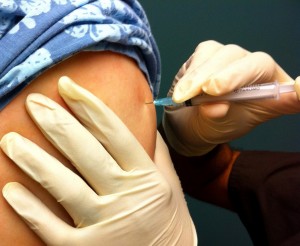There's news today about three different vaccines--HPV for boys, varicella vaccine (against chickenpox) and flu vaccines.
The common thread? Public health officials repeat the recommendations to get them.
First, a study in today's Pediatrics shows why the 2009 H1N1 pandemic was so lethal in previously healthy children. If those children were simultaneously carrying MRSA, a common staph infection, they were eight times more likely to die. The New York Times summarizes the story.
The authors conclude the study with this plea, "New therapies for treating severe influenza and new treatment strategies for MRSA pneumonia complicating influenza are urgently needed for children."
The Times also stresses the importance of prevention.
“There’s a nice message here about vaccines: that even otherwise healthy children are still at risk, and they are at risk of death,” said Dr. Lisa Saiman, a professor of clinical pediatrics at Columbia. The Centers for Disease Control and Prevention recommends the flu vaccine for everyone over the age of 6 months, and stresses that pregnant women, children younger than 2 and people over 50 are at especially high risk of having serious flu-related complications.
Next, HPV for boys. Richard Knox at NPR does a great job outlining why it might be easier to convince parents to vaccinate their sons instead of daughters. It has to do with the double standard about sexual activity. Knox interviews Dr. Don Dizon, a Brown University oncologist who speculates that sexual activity,"is something that's almost expected of boys."
